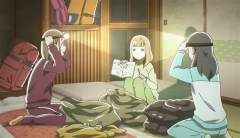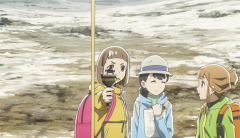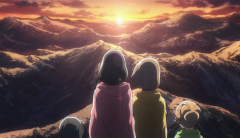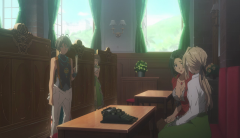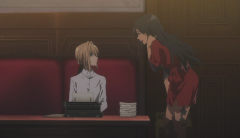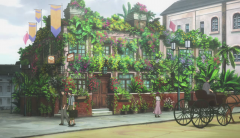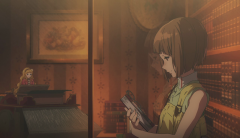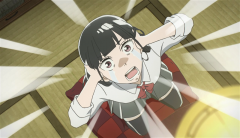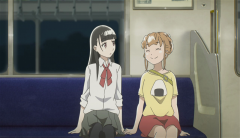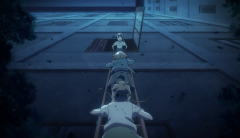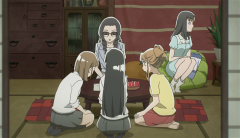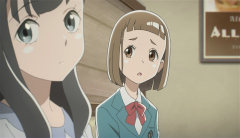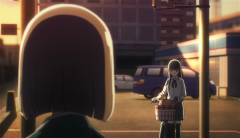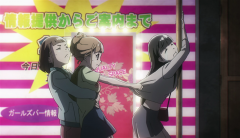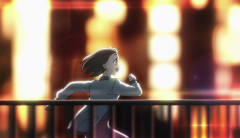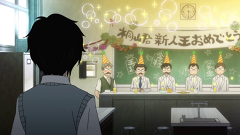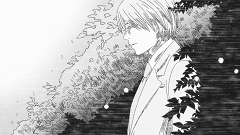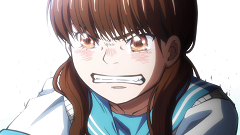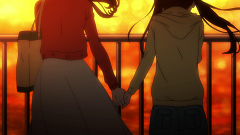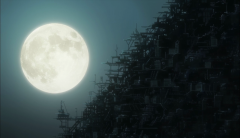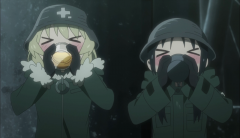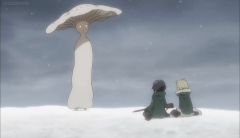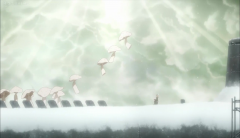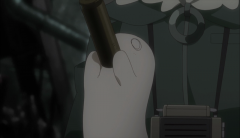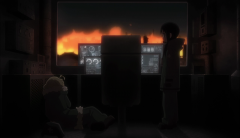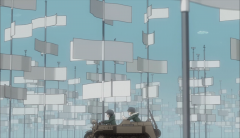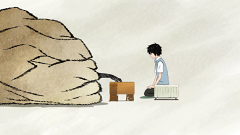Universe takes another firm step towards the Antarctica trip, this time more about the actual preparation: parents’ approval, training and the likes. We’re still far away from the final destination, and I suspect it’d take a few more episodes before the girls arrive to the South Pole. Not that I complain because these build-ups make this journey much more believable. It helps that the direction so far smartly conveys the tones it tries to bring across. Take the scene where Mari tries to get her Mom’s approval for example. The show knows how to play up the fear of Mari of being caught red-handed for arranging her trip without her Mom’s knowledge (Mari, it’d be wiser to ask your Dad instead). It constantly builds the atmosphere up, and then play out in a spooky playful nature (remember what did the little sister do when they realize their Mom knows? She shuts the door. I’m outta here. Case closed). Priceless. Or take the scene where the girls being underwhelmed inside the old van? Universe shows us not only their disappointments, but the condition of the car: the girls crammed up in small seats, stack of papers about funding, the small note sticking at the cassette telling them it’s broken, an expensive car passing it to put more salt to the wound… Those little details certainly help make this preparation phase more entertaining.
On to the 4-day training trip, I certainly feel related to how clueless the girls are when they have to do the actual field trip. Simple matters like which eye they should use, your left or my left, take note about altitude… the basic of mountain climbing, but there’s always first time for everyone. On that field trip, the girls meet their captain, Toudou Gin, whom sharing with Shirase the same pain: the loss of Shirase’s mother. It creates quite a tense tension between the two, so I expect we will learn more about her mother through their chemistry once they’re arriving to Antarctica. One potential conflict before they’re reaching the destination, though, is how Megumi (Mari’s best friend) feels a bit “uneasy” towards Mari’s plan. She has been the voice of reason for Mari to walk the fine line between “reaching your dream” and “taking realistic actions”, but her warming about feeling regret when you’re trying to hard but not achieving it sound off to me. It’s the opposite, and it’s not like her to say something like that. I guess we will have to wait until next week to see what Universe has in store for us regarding this plot thread.
One of my fear after the quartet is finally formed, is how then they will become less dominant and exist only as the group’s member with no real personality. Well, so far Universe hasn’t fall into that trap yet, given the cast still produces some neat chemistry together, and give both Mari and Shirase some more ground to develop. In Universe, Shirase has always been the one who drives the plot forward, and Mari is our emotional investment. This time again, when talking to Gin, she makes it clear that although Shirase was the invite them to the trip, it’s ultimately HER trip now – the place where she herself really wants to go and explore, along with all the friends she has made. Antarctica show is still looking strong at the moment.


